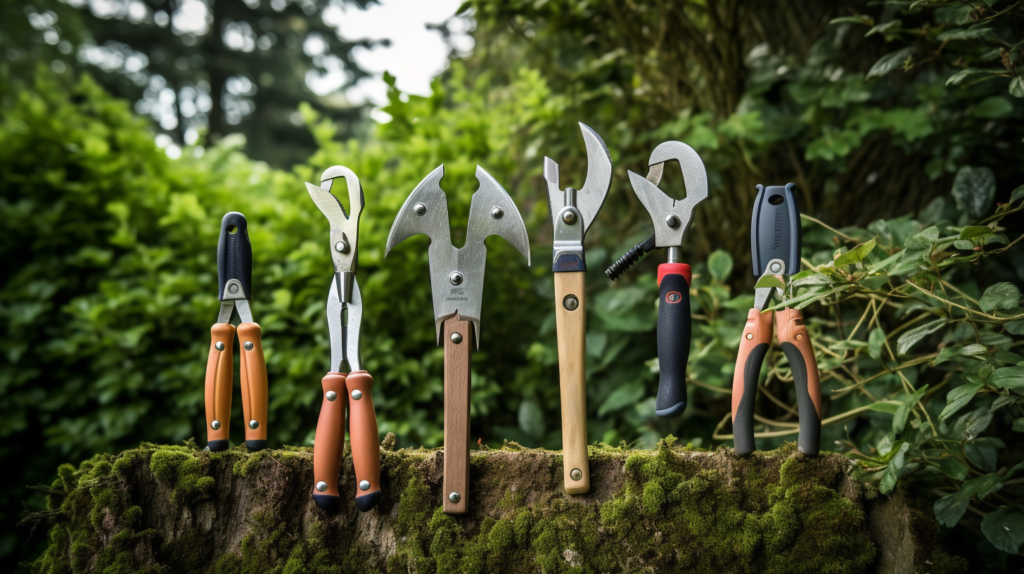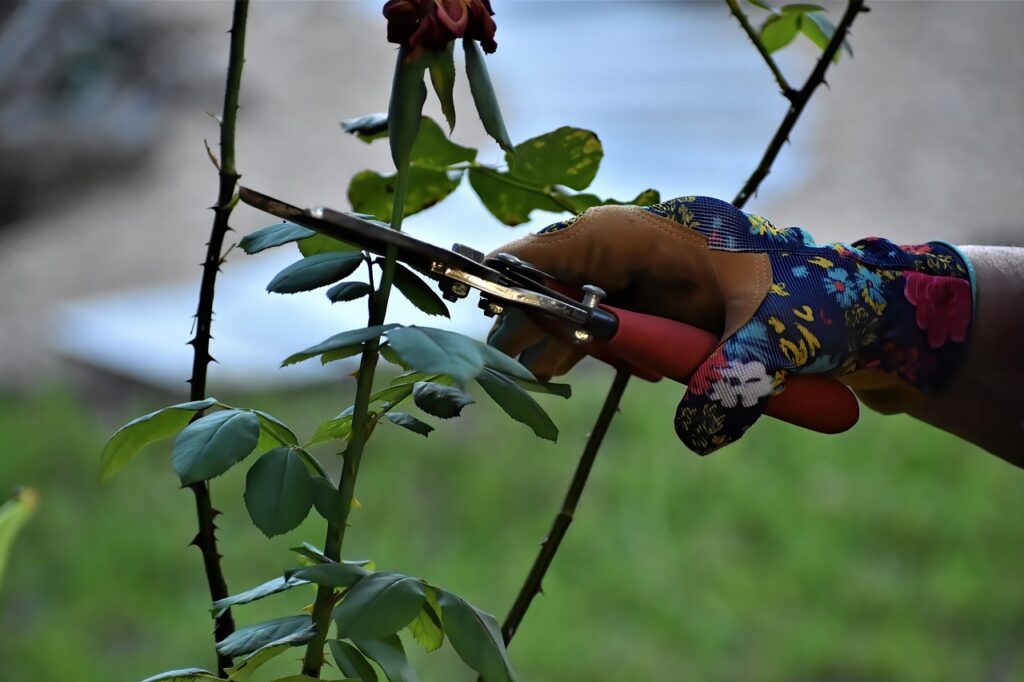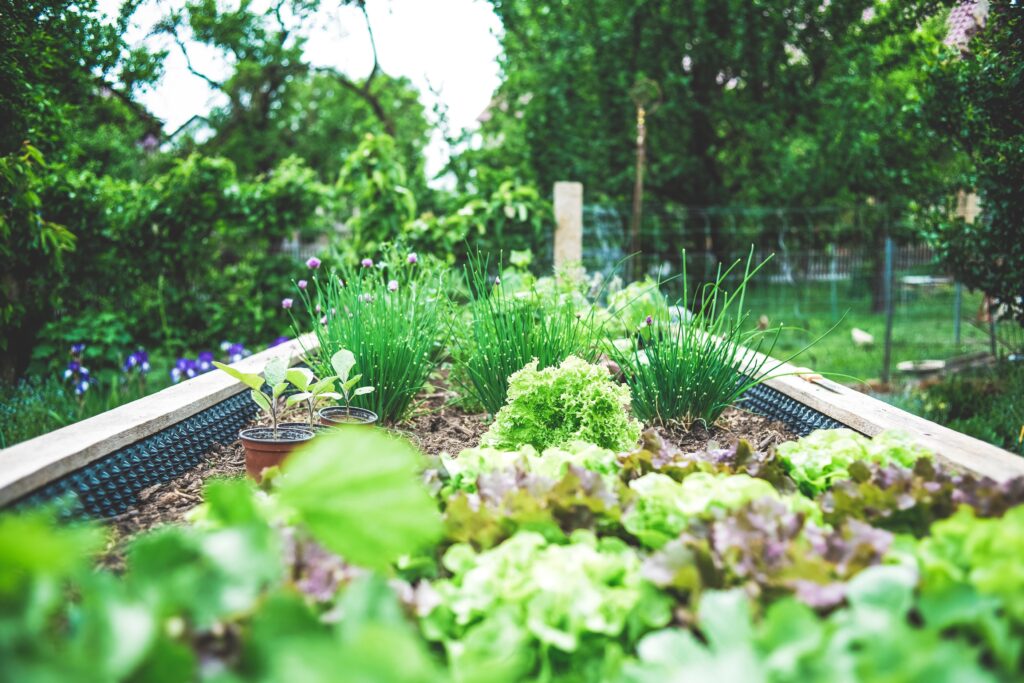Pruning is not merely a gardening chore; it’s an art that allows you to shape and stimulate the growth of your plants. When done correctly, pruning enhances the health, appearance, and productivity of your garden, making it an indispensable skill for any horticulturist. In this article, we will delve into the various aspects of mastering the art of pruning, providing you with valuable tips and tricks to optimize your gardening experience.
The Importance of Pruning
Pruning serves multiple vital purposes in gardening. By understanding these reasons, you can better appreciate the significance of mastering this art:
- Promotes Plant Health: Pruning removes dead or diseased branches, preventing the spread of infections and improving overall plant health.
- Encourages Growth: Strategic pruning directs plant energy to the desired areas, stimulating new growth and creating a fuller, more robust plant.
- Enhances Aesthetics: Well-pruned plants exhibit a tidy and visually appealing appearance, enhancing the overall beauty of your garden.
- Controls Size: Regular pruning helps manage the size of plants, especially those that tend to become unruly or overgrown.
- Boosts Yield: Fruit-bearing plants benefit from pruning as it leads to increased flower and fruit production.
Types of Pruning Techniques
Mastering the art of pruning involves understanding and utilizing various pruning techniques. Here are some common methods:
Thinning
Thinning is a horticultural technique beneficial for dense shrubs and trees. It involves selectively removing specific branches at their base to increase light penetration and improve air circulation within the plant. By creating a more open and airy canopy, thinning facilitates healthier growth, allowing sunlight to reach all parts of the foliage and energizing the leaves through efficient photosynthesis. This, in turn, promotes lusher and more robust development, enhancing the overall vitality of the plant. Thinning also plays a crucial role in preventing the onset of plant diseases and pest infestations. By reducing the density of the canopy, the humid and shaded environment that encourages harmful organisms’ growth is minimized, ensuring a healthier and less susceptible plant.
Moreover, thinning contributes to the structural integrity of the plant. By selectively removing weak, crossing, or poorly positioned branches, the overall architecture is improved, making the plant more resilient to potential damage from storms or heavy winds. However, it is essential to perform thinning with care, as improper pruning or over-thinning can lead to stress and harm the plant. Proper timing and technique are crucial to ensure that thinning optimizes the plant’s health and growth without causing any undue harm. With the right approach, thinning becomes a valuable practice in horticulture, promoting the long-term health and beauty of shrubs and trees in various landscapes.
Heading Back
Heading back is a pruning technique commonly employed in horticulture to stimulate new growth and achieve a well-maintained, appealing shape in shrubs and plants. This method involves selectively cutting back a portion of a branch, usually by trimming it to a specific node or lateral bud. By doing so, heading back redirects the plant’s energy to the remaining buds, prompting them to sprout and develop into new branches. As a result, the plant becomes more robust, denser, and bushier in appearance.
Heading back is particularly advantageous for shrubs that have become leggy or unevenly shaped due to overgrowth or lack of proper pruning. By strategically cutting back specific branches, gardeners can effectively balance the plant’s growth and create a more symmetrical and aesthetically pleasing form. Furthermore, this technique can rejuvenate older or neglected shrubs, encouraging them to produce fresh growth and revitalize their overall appearance.
Deadheading
Deadheading is a fundamental gardening practice employed to enhance the beauty and longevity of flowering plants. This process involves the careful and systematic removal of faded or spent flowers from the plant. The main objective of deadheading is to stimulate continuous blooming and discourage the plant from directing its energy towards seed production. By snipping off the withered blossoms, the plant’s resources are redirected towards the development of new buds and flowers, promoting a more extended and vibrant blooming period.
The benefits of deadheading extend beyond mere aesthetics. Not only does it maintain the plant’s visual appeal by eliminating unsightly and wilting flowers, but it also encourages the plant to devote its energy to growth and reproductive vitality rather than investing it in seed formation. This results in a more robust and vigorous plant, continuously gracing the garden with fresh blooms.
Deadheading is particularly effective with many perennial flowers and annuals, such as roses, petunias, marigolds, and zinnias. By removing the spent flowers before they have the chance to set seeds, the plant is motivated to continue producing new flower buds, thus prolonging the flowering season and creating a more abundant and colorful display.
Topiary Pruning

Topiary pruning is a captivating and elaborate horticultural practice that brings a touch of artistry and sophistication to any garden landscape. This unique form of pruning involves meticulously training plants into ornamental shapes and sculptures, turning them into living works of art. By skillfully trimming and shaping the foliage, topiary artists can create a wide range of intricate designs, from simple geometric patterns to elaborate animal forms and even human figures.
Garden Pruning Tools
To master the art of pruning, you need the right tools. Here’s a list of essential garden pruning tools:
| Tool | Purpose |
|---|---|
| Pruning Shears | Ideal for small stems and branches |
| Loppers | Suitable for thicker branches and shrubs |
| Pruning Saw | Perfect for cutting larger branches and tough wood |
| Hedge Trimmers | Designed for shaping hedges and shrubs |
| Pole Pruners | Useful for reaching tall branches without a ladder |
| Topiary Clippers | Precise tools for shaping topiaries and ornamental plants |

When to Prune Different Plants
Pruning timing is crucial to ensure successful results. Different plants have specific pruning requirements, and mastering these guidelines is essential. Here’s a breakdown:
Deciduous Trees
Pruning deciduous trees during their dormant season, which usually occurs in late winter or early spring, is a widely recommended horticultural practice. This timing is chosen because, during dormancy, the trees are in a state of rest, with slowed metabolic activity and no active growth. As a result, pruning during this period minimizes stress on the trees and maximizes their potential for regrowth and recovery.
One of the primary advantages of pruning during the dormant season is that it reduces the risk of injury and disease transmission. When the trees are dormant, wounds from pruning are more likely to heal quickly and effectively, as the tree’s resources are not being directed towards growth. Additionally, pests and pathogens that may be present are less active during this time, decreasing the likelihood of infection through freshly pruned cuts.
Evergreen Trees and Shrubs
Pruning evergreen trees and shrubs in early spring or late winter, before new growth commences, is a well-advised practice in horticulture. Timing the pruning during this period offers several significant benefits to the health and appearance of these plants.
By pruning before the onset of new growth, gardeners can shape and maintain the evergreen’s form more effectively. Trimming back unwanted or overgrown branches during this time allows for better visibility of the plant’s structure, making it easier to achieve a balanced and aesthetically pleasing shape.
Pruning in early spring or late winter also helps to invigorate the evergreen’s growth. By removing dead or damaged branches, the plant’s resources can be directed towards healthy growth, enhancing its overall vitality. Additionally, cutting back excessive growth can promote better air circulation and light penetration within the foliage, reducing the risk of disease and ensuring a healthier environment for the plant.
Flowering Shrubs
Pruning flowering shrubs immediately after they bloom is a key horticultural guideline that can significantly enhance the plant’s overall health and flowering performance. By adhering to this timing, gardeners allow sufficient time for the shrub to develop new buds for the upcoming season, ensuring a bountiful and vibrant display year after year.
The timing of post-bloom pruning is critical because it takes advantage of the plant’s natural growth cycle. After flowering, the shrub begins to allocate its resources towards the production of new buds for the following year. By pruning at this juncture, the shrub can focus its energy on developing these new buds, promoting a profusion of blossoms in the next growing season.
Pruning immediately after blooming also allows gardeners to enjoy the full spectacle of the shrub’s flowers without impeding their development. By waiting until the flowering period is complete, gardeners can assess which branches need trimming and shape the shrub without compromising the current bloom.
Additionally, post-bloom pruning ensures that the shrub’s growth is balanced and controlled. By selectively removing spent flowers and shaping the plant, gardeners can maintain a well-proportioned and aesthetically pleasing form. This practice also helps to open up the interior of the shrub, improving air circulation and light penetration, which contributes to the overall health of the plant.
However, it is crucial to exercise care during pruning to avoid cutting into branches that have already formed buds for the following season. Proper technique and precision are necessary to preserve the next year’s flowering potential.
Tips for Proper Pruning
To achieve optimal results, follow these expert tips for mastering the art of pruning:
Know Your Plants
Understanding the diverse growth habits of different plants is a fundamental aspect of successful pruning and essential for maintaining their health and appearance. Each plant species possesses unique growth patterns, branching structures, and responses to pruning, making it crucial for gardeners to be familiar with these characteristics.
Pruning involves the selective removal of specific plant parts, such as branches, stems, or leaves, to enhance the plant’s overall form, health, and productivity. However, applying the same pruning techniques to all plants without considering their individual growth habits can lead to unintended consequences, such as stunted growth, reduced flowering, or even damage to the plant.
Use Sharp and Clean Tools
Maintaining sharp and clean pruning tools is crucial for successful gardening and the overall health of plants. Dull or dirty tools can cause harm to plants, leading to improper cuts that may weaken or injure the plant. Furthermore, using unclean tools can potentially spread diseases from one plant to another, exacerbating the problem and jeopardizing the entire garden’s well-being. To ensure effective results and promote the vitality of your plants, it is essential to keep your pruning tools in top condition.
Sharp pruning tools make clean cuts that heal faster and reduce stress on plants. Dull blades can tear or crush plant tissues, creating ragged wounds that take longer to close and heal. These wounds are more susceptible to infections and pests, leading to further damage and potentially compromising the plant’s health. Regularly sharpening your pruning tools, such as shears, loppers, and pruning saws, is vital to maintain their cutting efficiency and preserve the integrity of your plants.
Start Small
For those new to pruning, it is essential to begin with simple cuts and gradually build your skills and confidence before attempting more complex techniques. Pruning can be both an art and a science, and taking a measured approach allows you to understand the effects of your cuts and avoid potentially harmful mistakes.
Start by familiarizing yourself with the basic pruning tools, such as hand pruners, loppers, and pruning saws. Learn how to handle them safely and effectively. Begin with small, manageable tasks, like removing dead or diseased branches or cutting back overgrown growth. Simple cuts, such as the removal of small twigs or branches, can help you gain a sense of how the plant responds to pruning and allow you to observe the impact of your actions.
Avoid Over-Pruning
Over-pruning can have detrimental effects on plants, weakening their overall health and hindering their ability to recover. It is crucial for gardeners to exercise restraint when cutting to avoid excessive removal of plant material.
Pruning is a beneficial practice when done correctly and in moderation. It can help improve a plant’s structure, promote better airflow and light penetration, and stimulate new growth. However, when gardeners go overboard and remove too much foliage, it can lead to unnecessary stress and damage.
One of the risks of over-pruning is that it depletes the plant’s energy reserves. Leaves are essential for photosynthesis, the process by which plants produce food and energy. Removing too many leaves can starve the plant, making it weak and more susceptible to diseases and pests.
Step Back and Assess
Regularly stepping back to assess your progress while pruning is a wise and effective practice that contributes to maintaining the plant’s overall shape and balance. Pruning can be an intricate and precise task, and taking brief breaks to evaluate your work from a distance allows you to gain a better perspective on the plant’s appearance and make more informed decisions.
Conclusion
Pruning is an indispensable skill for any gardener looking to cultivate a thriving garden. By mastering the art of pruning, you’ll witness your plants flourish like never before. This section will provide additional insights into perfecting this skill.
Mastering the art of pruning is an essential skill that every gardener should possess. With the right knowledge, techniques, and tools, you can shape and stimulate plant growth, ensuring your garden flourishes and thrives. Remember to understand your plants, use the proper pruning tools, and prune at the appropriate times to achieve the best results. So, let’s embark on this journey of pruning mastery and witness the beauty and abundance it brings to our gardens.
FAQs
Q: When is the best time to prune roses in my garden?
A: The best time to prune roses is in late winter or early spring, before new growth starts. This allows the plants to focus their energy on producing new, healthy blooms.
Q: Can I use regular scissors for pruning my plants?
A: It is not recommended to use regular scissors for pruning, as they may not provide clean cuts and can damage the plant. Invest in proper pruning shears for the best results.
Q: How often should I prune my fruit trees for optimal yield?
A: Fruit trees should be pruned annually during their dormant season to encourage new growth and maximize fruit production.
Q: Can I prune my plants in the fall?
A: While some light pruning is acceptable in the fall, major pruning should be avoided, as it can leave plants vulnerable to winter damage.
Q: What should I do if I accidentally prune too much from a plant?
A: If you’ve accidentally over-pruned a plant, refrain from further pruning and ensure the plant receives adequate water and nutrients to support recovery.
Q: Is it necessary to sterilize pruning tools between cuts?
A: Yes, sterilizing your pruning tools between cuts prevents the spread of diseases among plants. Use a solution of 70% isopropyl alcohol for effective sterilization.



